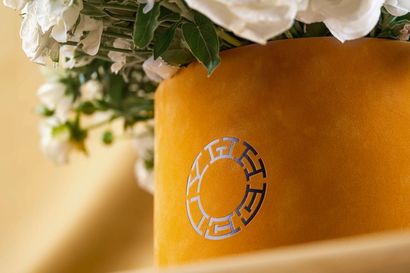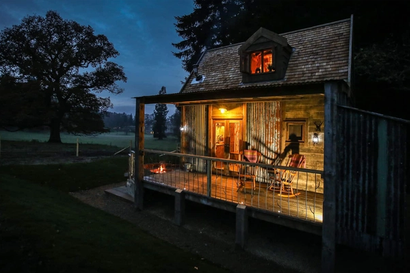The fortunes of the French Riviera have long been intertwined with the fortunes of the global elite. The aristocracy and royalty of the Mediterranean were the first to colonise its blue shores, before giving way to a juggernaut of industrialists, robber barons and banking tycoons at the start of the 20th century.
Then came the new generation of European playboys, movie moguls and moneyed Americans, whose fast living and faster cars put a golden sheen on the Cote D’azur that lingers still. Finally, the era of the nouveau – post-Soviet Russian oligarchs, sovereign wealth rich kids, Silicon Valley name-droppers, naff investment bankers, and all of their various Balenciaga-ed coteries.
Perhaps it is to one of these new tribes that the future of Villa Les Cèdres – the beautiful 187-year-old mansion that has just been listed at a valuation of €350 million – will now fall. The house has been an enduring feature through every twist and turn in the Riviera’s slideshow history – an unchanging cornerstone of civilization nestled among the hubbub and flashbulbs of Saint-Jean-Cap-Ferrat. Needless to say, its sale is of no small significance.
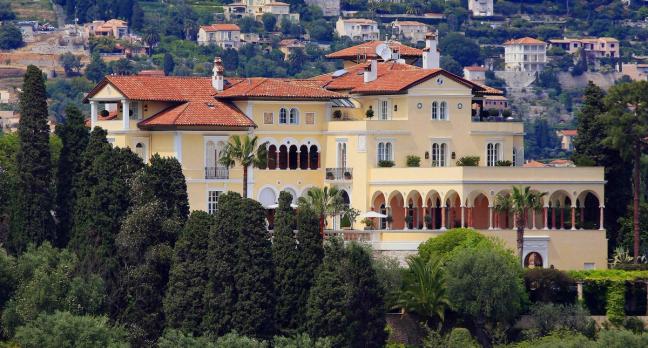
The mansion was originally built in 1830, at a time when grandiose manors in the South of France were relatively few and far between. It was soon bought in 1850 by the mayor of Villefranche-sur-Mer, who had done rather well out of the cloth trade down in Nice. The mayor operated it as part palatial stomping ground for French dignitaries and part olive farm, a heritage that lives on today in the 300-year-old olive groves that have survived the house’s various owners.
Perhaps the most ambitious of these was King Leopold II of Belgium, who bought the house from the mayor’s descendants in 1904, and set about expanding the vast grounds and refitting the interiors to his own exorbitant tastes (Leopold, it should be said, had made his money by exploiting the rubber trees and glittering ores of the then Congo Free State.)
The Villa soon fell into even more sybaritic hands, when the Marnier-Lapostolle family came to own it in 1924. The distilling dynasty had come to prominence on the back of Grand Marnier, the curious blend of cognac and triple sec that seemed, with its warming, potent depths and saccharine edge, to embody the fast living of the Riviera’s Jazz Age. The Marnier-Lapostolle’s soon began to use the house’s grounds to grow the bitter oranges that give Grand Marnier its bite.,
For more than 80 years the good times continued until Les Cèdres fell to another Mediterranean distilling company – this time when Campari acquired the Grand Marnier parent company. Campari soon realised the value of the achingly beautiful mansion and popped it on the market tout suite via the estate agent Savills.
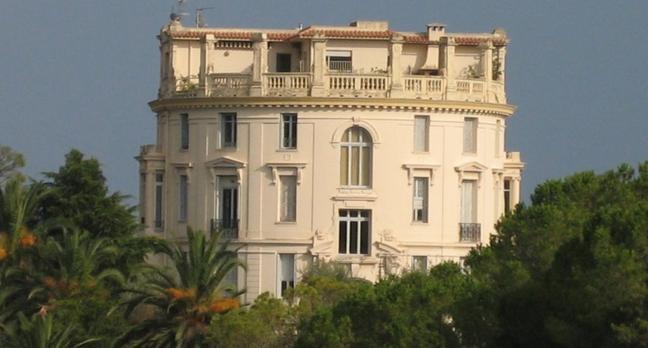
The first thing any potential buyer will notice about Villa Les Cèdres is it’s famous light-peach stucco exterior. This is said to be in homage to the tastes of the bygone Kingdom of Sardinia, which ruled this corner of the South of France until 1860.
Entrances at Les Cèdres can only be dramatic. Guests arrive via the famous winding driveway, cruising in their Buffy Porson through an avenue of vast palm fronds and the cedars trees that give the house its name.
Upstairs, the gleaming white balconies hold a remarkable view of both the famous coastal stretch of Villefranche-sur-Mer and the glowering heights of the the Italian Alps.
The decor inside is an opulent Regency chic – vast chandeliers, brocaded wall hangings, intricate cornicing. Vast 19th century portraits speak of the house’s political and ceremonial past, while the oak-cloaked library holds 3,000 books on biology and botany that recall the villa’s history of distilling. (One 1640 edition of a botanical reference work in the library is valued at some half a million euros)
Perhaps the most striking feature of all is the villa’s 25 greenhouses and wild, roaming gardens – Teissier, the chief gardener, estimates that there are over 4,000 species of plant within the house’s boundaries.
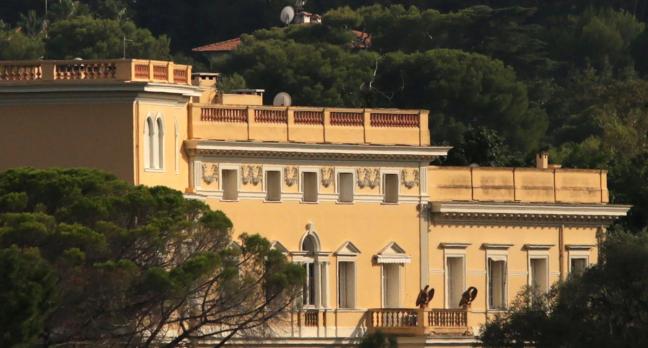
The rumours circulating in the local press stated that Villa Les Cèdres had been valued independently at €1 billion, a price tag dismissed as “absurd” by Fabio Di Fede, the managing director of Grand Marnier’s holding company. The market estimates hover closer to €350 million. It’s worth noting that Saint-Jean-Cap-Ferrat is known as the most coveted of all the Caps – over even Cap d’Antibes and Cap-d’Ail.
No buyer has yet been linked – either officially or unofficially – with this milestone sale. Current neighbours include theatre impresario Andrew Lloyd Webber and Microsoft CEO Paul Allen. A new buyer would need to have their calibre of wealth, at the very least, to even muster the estate agent’s fees.
With a steering committee of five Marnier family members set up to oversee the sale, it is unlikely that any decision will be reached soon. Meanwhile, the global climate around the uppermost reaches of the property market continues to cool, and the cabal of billionaires who would usually invest in this sort of place has begun to look elsewhere for their investments. The most remarkable house on the riviera may remain vacant for many months yet. Time to start saving, gentlemen?

Become a Gentleman’s Journal Member?
Like the Gentleman’s Journal? Why not join the Clubhouse, a special kind of private club where members receive offers and experiences from hand-picked, premium brands. You will also receive invites to exclusive events, the quarterly print magazine delivered directly to your door and your own membership card.

